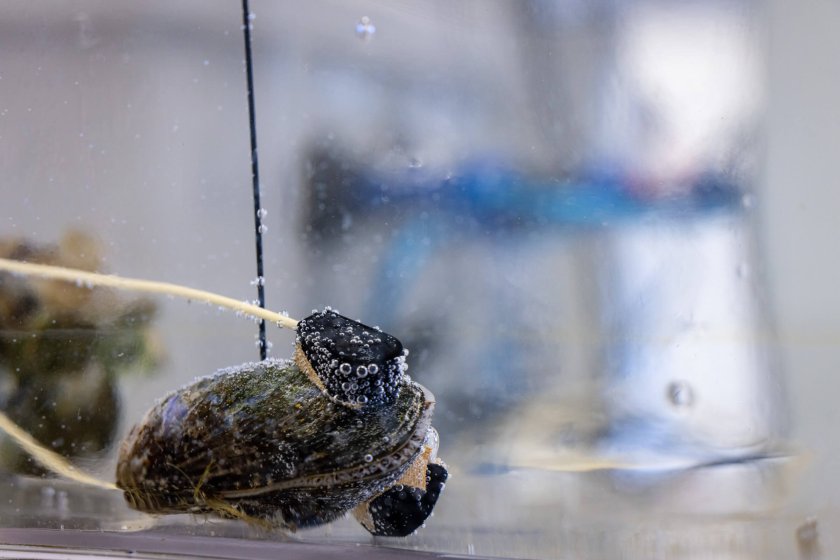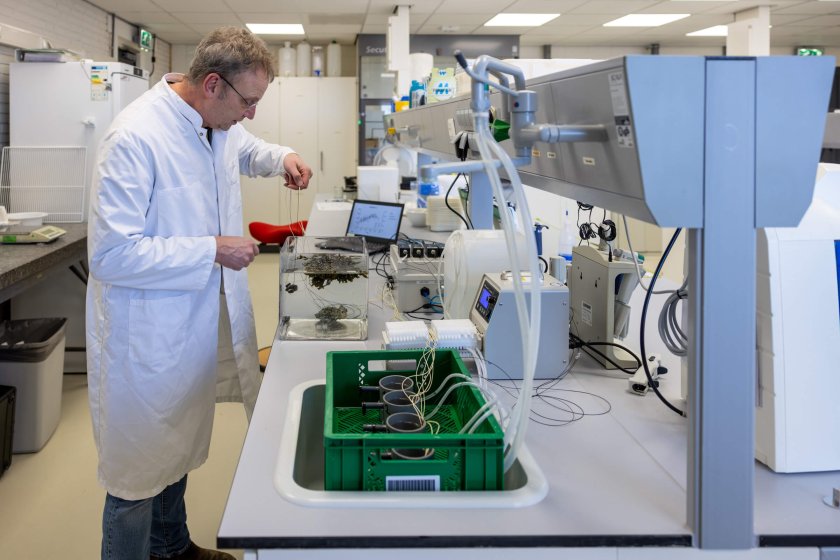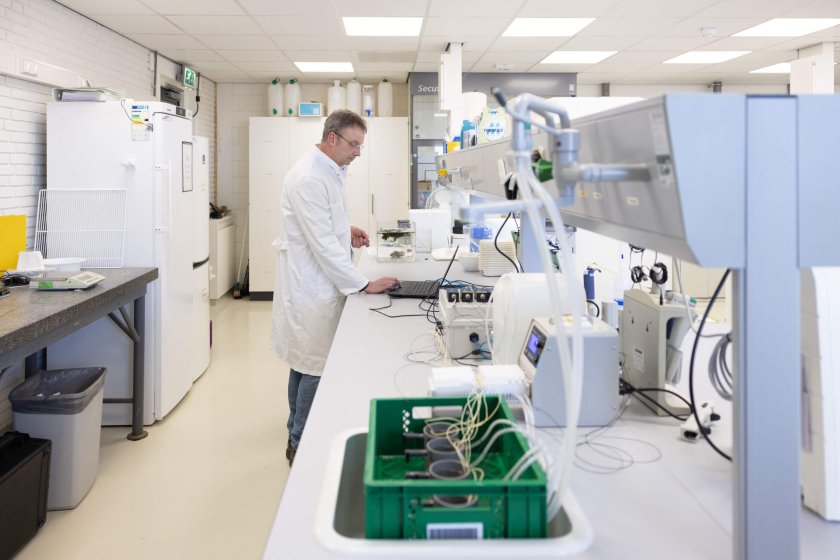
Showcase
Sensors measure animals’ energy levels
Do farmed fish suffer from a change to the farming system? How can you find out whether a population of wild animals suffers from a disruption to their habitat? These are questions scientists are better able to answer nowadays thanks to the use of sensors. This technology offers all sorts of possibilities in the near future, both in livestock and fish farming and in the wild.
Living costs energy, with food providing the fuel. Food is usually a scarce resource for animals, so efficient energy consumption is the key to success for an individual organism. An animal’s energy consumption increases if it constantly has to flee from danger or if it has to cope with illness or adverse living conditions, for example. The less energy it needs for all that, the more is available for growth and reproduction. Factors such as climate change, pollution, pathogens and other disturbances to the habitat affect its energy consumption.
Even a minor change in the animal’s surroundings can affect its energy usage. “This can retard growth in farmed fish and farm animals and reduce their resistance, without it being immediately visible,” explains ecotoxicologist Edwin Foekema.
“In the wild too, a lengthy disruption to the energy utilisation pattern, for example due to a shrinking habitat or pollution, can make individual animals less fit. The process has often been going on for a while before current monitoring methods can pick it up.” Especially in those situations, more research is needed to discover the cause before the right measures can be taken.

If we can find out what’s going on earlier, that will save time and reduce the disruption’s negative effects on the animals. Sensors can help here, says Foekema. “Sensors give immediate information about the animals’ energy utilisation and any disturbances. They allow fish farmers or nature managers to take action sooner in order to tackle the cause of the disruption.”
If we can find out what’s going on earlier, that will save time and reduce the negative effects on the animals of the disruption
Sensors that collect data on the health of animals and humans are developing at a rapid pace. Examples are the popular smartwatches people wear to track their heart rate and activity. Now researchers are taking sensors that are already on the market and using them for mussels and fish. The sensors let them simultaneously measure parameters such as movement, heart rate, respiration and food intake.

To take measurements of mussels, the researchers drilled holes in their shells and inserted tiny sensors that measure oxygen levels inside. If a mussel ends up out of the water or if the water is polluted, the mussel closes its shell to protect itself. Foekema: “The assumption was that the mussel would then have a supply of oxygen to keep it going for a while. But now we have discovered the oxygen runs out after a few minutes, so the mussel needs to switch to anaerobic respiration almost immediately.” This is less efficient and cannot be kept up for long. The research on fish makes use of swim tunnels. Sensors in the fish measure their heart rate and activity at ever faster flow speeds.
At the same time, their oxygen use is measured and their swimming behaviour analysed. Combining different measurements enables researchers to say more about how energy consumption is affected by changes in the surroundings. “My colleague Arjan Palstra, who heads up the research on fish, is collaborating with Norwegian researchers on how to measure the partial oxygen pressure in the blood directly,” says Foekema. “We are also working with the University of Twente on designing a biochip to measure cytokines in the blood.” Cytokines reveal how an animal manages its energy.

At present, the first steps are being taken to combine the data that has been collected on each animal in a computer model known as a ‘digital twin’. This is a virtual version of an animal that uses the sensor data to show how much energy is being used at a given moment and for what activities. WUR researchers are carrying out such measurements not just on fish and shellfish, but also on farm animals such as cows. Foekema: “The kind of data is roughly the same for all species. That is why we will be starting the joint development this year of a basis for digital twins for various groups of animals.”
The kind of data is roughly the same for all species. That is why we will be starting the joint development this year of a basis for digital twins for various groups of animals
The system is intended initially for animals in the laboratory or on the farm. However, the ultimate challenge is to develop the technology so that it can be used for a wide range of species in the wild. “We would prefer to work with just one sensor that can perform lots of measurements at the same time.” Shellfish are relatively easy, says Foekema. They hardly move and it isn’t difficult to attach a sensor to the shell.

Many other species present a bigger challenge. “We don’t want the animals to be troubled by the sensors and we need to find solutions for reading the data that has been collected on location. If we can manage that, this research will provide valuable information for the protection of endangered species. For example, we can find out how much energy a fish loses when having to tackle obstacles blocking its migration route, what happens to the energy consumption of a bat that encounters wind turbines, or why some species are better able to cope with climate change than others.”